#the german revolution 1918-19
Explore tagged Tumblr posts
Text
In 1917, during WW1:
The most outstanding representative of this trend [true internationalists] in Germany is the Spartacus group or the Internationale group, to which Karl Liebknecht belongs. Karl Liebknecht is a most celebrated representative of this trend and of the new, and genuine, proletarian International.
Karl Liebknecht called upon the workers and soldiers of Germany to turn their guns against their own government. Karl Liebknecht did that openly from the rostrum of parliament (the Reichstag). He then went to a demonstration in Potsdamer Platz, one of the largest public squares in Berlin, with illegally printed leaflets proclaiming the slogan “Down with the Government!” He was arrested and sentenced to hard labour. He is now serving his term in a German convict prison, like hundreds, if not thousands, of other true German socialists who have been imprisoned for their anti-war activities.
The Tasks of the Proletariat in Our Revolution by Lenin
the enemy is at home, even when "your" country is at war with other capitalist powers. even when those powers invade "your" country or threaten to. you are a proletarian and your enemy is the bourgeoisie and its allies
#socialism#politics#socialist history#german history#the german revolution 1918-19#communism#marxism
4 notes
·
View notes
Text
November 9, the fateful day of the Germans in history
Nov 9, 1313: Battle of Gammelsdorf - Louis IV defeats his cousin Frederick the Fair marking the beginning of a series of disputes over supremacy between the House of Wittelsbach and the House of Habsburg in the Holy Roman Empire
Nov 9, 1848: Execution of Robert Blum (a german politician) - this event is said to mark the beginning of the end of the March Revolution in 1848/49, the first attempt of establishing a democracy in Germany
Nov 9, 1914: Sinking of the SMS Emden, the most successful German ship in world war I in the indo-pacific, its name is still used as a word in Tamil and Sinhala for a cheeky troublemaker
Nov 9, 1918: German Revolution of 1918/19 in Berlin. Chancellor Max von Baden unilaterally announces the abdication of Kaiser Wilhelm II and entrusts Friedrich Ebert with the official duties. At around 2 p.m., the Social Democrat Philipp Scheidemann proclaims the "German Republic" from the Reichstag building. Two hours later, the Spartacist Karl Liebknecht proclaims the "German Soviet Republic" from the Berlin City Palace.
Nov. 9, 1923: The Hitler-Ludendorff Putsch (Munich Beer Hall Putsch) is bloodily suppressed by the Bavarian State Police in front of the Feldherrnhalle in Munich after the Bavarian Prime Minister Gustav Ritter von Kahr announces on the radio that he has withdrawn his support for the putsch and that the NSDAP is being dissolved.
Nov 9, 1925: Hitler imposes the formation of the Schutzstaffel (SS).
Nov 9, 1936: National Socialists remove the memorial of composer Felix Mendelssohn Bartholdy in front of the Gewandhaus concert hall in Leipzig.
Nov 9, 1938: November Pogrom / Pogrom Night ("Night of Broken Glass") organized by the Nazi state against the Jewish population of Germany.
Nov 9, 1939: The abduction of two british officiers from the Secret Intelligence Service by the SS in Venlo, Netherlands, renders the British spy network in continental Europe useless and provides Hitler with the pretext to invade the Netherlands in 1940.
Nov 9, 1948: Berlin Blockade Speech - West Berlin mayor Ernst Reuter delivers a speech with the famous words "Peoples of the world, look at this city and recognize that you cannot, that you must not abandon this city".
Nov 9, 1955: Federal Constitutional Court decision: all Austrians who have acquired german citizenship through annexation in 1938, automatically lost it after Austria became sovereign again.
Nov 9, 1967: Students protest against former Nazi professors still teaching at German universities, showing the banner ”Unter den Talaren – Muff von 1000 Jahren” ("Under the gowns – mustiness of 1000 years", referring to the self-designation of Nazi Germany as the 'Empire of 1000 Years') and it becomes one of the main symbols of the Movement of 1968 (the German Student Movement).
Nov 9, 1969: Anti-Semitic bomb attack - the radical left-winged pro-palestinian organization “Tupamaros West-Berlin” hides a bomb in the jewish community house in Berlin. It never exploded though.
Nov 9, 1974: death of Holger Meins - the member of the left-radical terrorist group Red Army Faction (RAF) financed in part by the GDR that eventually killed 30 people, dies after 58 days of hunger strike, triggering a second wave of terrorism.
Nov 9, 1989: Fall of the Berlin Wall - After months of unrest, demonstrations and tens of thousands escaping to West Germany, poorly briefed spokesman of the newly formed GDR government Günter Schabowski announces that private trips to non-socialist foreign countries are allowed from now on. Tens of thousands of East Berliners flock to the border crossings and overwhelm the border guards who had not received any instructions yet because the hastily implemented new travel regulations were supposed to be effective only the following day and involved the application for exit visas at a police office. Subsequently, crossing the border between both German states became possible vitrually everywhere.
232 notes
·
View notes
Photo



A7Vs in service with the German Freikorps, during the German Revolution of 1918-19
42 notes
·
View notes
Text
"IF YOU WERE AN ordinary person living in Canada in the winter of 1918– 19, you might well have thought that the world was coming down around your ears.
World War I had ended at 11 a.m. on Monday, November 11, 1918. Word of the armistice reached Canada in the early hours of the morning. As people heard of it, they spilled from their houses into the streets, some of them still in their pyjamas and nightgowns, congregating on street corners to toast the peace. After more than four years of war, there was a passion to celebrate. In Toronto, a pre-dawn procession of munitions workers, mainly women, paraded down Yonge Street, beating on pots and pans and blowing whistles. Towns and cities erupted in a noisy jubilee: sirens began wailing, factory whistles blew, church bells rang. Bonfires crackled on street corners and fireworks exploded. In the prairies, haystacks burned brightly in the fields. When daybreak came, work was forgotten as downtown thoroughfares filled with celebrants. Effigies of the German Kaiser were strung up and set ablaze. Civic officials hastily organized victory parades where Canadians expressed their relief that the war was finally over. Churches held special services of thanksgiving. The acting prime minister, William Thomas White (Prime Minister Robert Borden was already in England preparing for peace talks), dashed off a telegram to Arthur Currie, commander of the Canadian forces, commending their “courage, endurance, heroism and fortitude.”
But the euphoria did not last for long. Once the hangover of celebration wore off, Canadians woke up to the realization that there was no peace. Instead, everywhere in the world there seemed to be violence and turmoil: revolution in Germany and Hungary; civil war in Russia; uprisings in China and India; war in Afghanistan; general strikes in major cities across the United States. It was the Bolsheviks, people said; they seemed to be everywhere, overturning governments, seizing private property, and imposing their radical ideas. For some, these foreign “Reds” represented hope for a more just society; for others, they were a dangerous evil let loose to prey upon mankind.
If unrest was the rule around the world, why not in Canada? The war had left many Canadians disappointed and anxious about the future. The cost of living had been rising at three times the pace of wages. Working people found themselves poorer off than before the conflict began. As demobilized veterans returned home looking for jobs, a looming unemployment crisis threatened the economy. Returning soldiers were angry to find recent immigrants and people who had not put their lives at risk during the war occupying positions that they thought should belong to themselves.Conscription had opened an ugly division between French and English Canada. Under Borden’s Conservative government, political life seemed to have achieved unprecedented levels of corruption. The government and the press were engaged in a full-blown panic about the threat to the Canadian way of life posed by foreign agitators and labour radicals. Professor O.D. Skelton wrote in the Queen’s Quarterly:
The strain of war has produced a reckless and desperate temper. The world cannot be torn up by the roots for five years without destroying much of the old stability and acquiescence in the established order.
Canadians wondered what the war had been all about if the result was so much uncertainty, so much turmoil. They were proud of their country’s contribution to the conflict, but unsure about how to make it count for something. Surely more than 60,000 young Canadians had not given their lives just to preserve the status quo. The sacrifice seemed to demand a better way of doing things. A thirst for significant change cut across all stratas of society, from factory workers to farmers, from church ministers to returned soldiers to politicians. The federal cabinet minister Newton Rowell summed it up:
We cannot go back to old conditions, if we would, and we ought not to, even if we could.
But there was little agreement about what a new, improved Canada might look like. At a conference on reconstruction organized by the federal government in Ottawa, business leaders revealed their suspicion of even the most basic reforms, preferring instead a return to “normalcy,” by which they meant the way things had always been. That was the conservative, go-slow approach to post-war policy making: change if necessary but not necessarily change. What was the point of winning the war against Kaiserism, they wondered, if it led to Red revolution at home? More assertive voices for change emanated from the Protestant churches, which before the war had organized the Social Service Council to advocate for progressive social reform. The Council threw its support behind “industrial democracy” and a wide-ranging set of social welfare policies, including mothers’ allowances, unemployment insurance, and old-age pensions. The Methodists went farther still, calling for “nothing less than a complete social reconstruction” of postwar Canada.
Yet even this clarion call did not go far enough for political activists in the labour movement and the various socialist parties. They adopted the rhetoric of world revolution. Nothing would satisfy these radicals short of an overhaul of the structure of economic ownership in the country. “Are we in favour of a bloody revolution?” asked Calgary labour organizer Jean MacWilliams, appearing before a government commission in the spring of 1919. “Why any kind of revolution would be better than conditions as they are now.” In other words, what was the point of winning the war in Europe if it did not lead to revolution at home?"
- Daniel Francis, Seeing Reds: the Red Scare of 1918-1919, Canada’s First War on Terror. Arsenal Pulp Press, 2011. p. 9-12.
#world war 1 canada#world war 1#end of world war 1#fear of a red planet#postwar reconstruction#labour revolt#bolsheviks#russian revolution#communism#anti-communism#research quote#reading 2024#canadian history
2 notes
·
View notes
Text
In the lands that would become Poland, several workers’ councils took control of cities and provinces with industrial assets. These were the exact opposite of the Hungarian councils that wanted to maintain the old order as much as possible, since they wished to overturn the past forms of government and replace traditional elites, such as large landowners and imperial police. In the Dąbrowa coal basin, for example, several workers’ councils sprung up quickly at mines and factories as it became clear that the Austrian occupation there was collapsing. This area was home to thousands of workers in heavy industry and had been in the Russian Empire before the First World War. Using their experience from the Revolution of 1905 – when the first ‘soviets’ (councils) were set up – some of the same figures led the charge to replace the local government with revolutionary councils.
A small group of communists started to disarm local Austrian units on 2 November 1918 and used those weapons to found a Red Guard. With around 300 rifles, the loosely connected councils gained some real power. Overnight, between 9–10 November, workers with the People's Militia (Milicja Ludowa) took control of all command posts, banks and the county treasury. Local leaders announced independence on 10 November, declaring ‘From today onward, both civilian and military power will be in our hands’. The speakers implied that ‘we’ meant the working class of the Dąbrowa Basin. The next day, German troops responded by trying to take control of the area but failed, and the soldiers were disarmed. The People's Militia, in addition to the boost in arms they gained from the abortive raid, managed to derail an armoured train and commandeer it.
Over the following days, factory workers and miners elected representatives to councils. The remaining German soldiers stationed in the area gave up their weapons after 11 November. This created the opportunity for one of the only organised political forces in the area, the workers’ councils, to take over civil administration as well. Thus, with mostly socialist and communist representatives, the administration unified the various local councils into a de facto government for the region called the Council of Workers’ Deputies (RDR). The first parliamentary session took place on 19 November, with Henryk Bicz from the Polish Socialist Party as the presiding member. The council included representatives from all the region's mines, factories and steelworks.
The new centralised council, based in Sosnowiec, organised six departments to start the business of governing. Among them were departments addressing business, culture, health, food distribution, education, the military and a secret section for undermining counter-revolutionary forces.The RDR defined counter-revolutionary threats quite broadly. For example, when the Warsaw government offered to provide aid in the form of food and medicine, the council refused. At least a majority of the representatives did not want to be associated with what they labelled the ‘Paderewski’ government in Warsaw, in reference to the pianist-turned-diplomat for the Polish cause, Ignacy Jan Paderewski.
From the surviving record, it appears that the RDR also managed one of the most fundamental functions of governing, that is, tax collection.Unsurprisingly for socialists, the main targets of their tax plans were the factory and mine owners. The RDR used existing Russian law on the books as the basis for their activities but changed the tax rates to ensure that they could extract as much as possible from the businesses operating in the region. A report from April 1919 claims that tax receipts were quite robust over a three month period, indicating that business owners saw the RDR as a legitimate local government in some sense.
Not all workers, however, were allied with the RDR's leftist stance. The National Workers’ Union (NZR) and other ‘Polish’ unions had strong backing since the Revolution of 1905. During one incident at the Saturn mine, a group of nationalist workers attacked socialist unionists who were gathering for a meeting. In the melee several men were killed, leading the RDR to order that all ‘white guards’ be removed and disarmed. The civil authorities were apparently thinking well into the future since they also offered that the families of the fallen men should receive a pension for the rest of their lives.
Gotta set up a Soviet of Worker's Deputies to destroy the false bourgeoisie government so we can really get going on that zoning reform.
17 notes
·
View notes
Text

George Grosz (German, 1893-1959) Cover: Gott mit Uns (God with Us)(1920) Portfolio of nine photolithographs executed 1918-19 The Museum of Modern Art, New York
George Grosz takes aim at the stupidity and brutality of the German military in his portfolio Gott mit Uns (God with us). In nine unremittingly caustic, clearly rendered illustrations, Grosz focuses on the corrupt nature of the pompous, overfed, and self-satisfied officers and officials who had dragged Germany into the cataclysm of World War I and who still governed the Weimar Republic. Grosz depicts the violent suppression of the working class by the ruling class. In Die Kommunisten fallen—und die Devisen steigen (Blood is the Best Sauce), uniformed soldiers beat unarmed protestors as an officer and a profiteer enjoy a decadent meal. Elsewhere, a dead body washing ashore does not disturb a soldier's cigarette break. Grosz sharpens his visual attacks with captions printed in three languages—English, French, and German. These statements are not always direct translations, but sometimes different phrases that together heighten Grosz's satirical attacks. "Gott mit Uns" (God with us), taken from the inscription on German soldiers' belt buckles, originally meant to invoke God's support, becomes in the English caption "God for Us," a nationalist cry to smite the enemy.
Grosz's political stance (as a communist) and intentions (working-class revolution) were obvious. Kurt Tucholsky, one of Weimar Germany's leading satirists, said of the portfolio, "If drawings could kill, the Prussian military would certainly be dead." Grosz, along with his publisher, Wieland Herzfelde, was tried for defamation of the military; found guilty, they were fined and forced to surrender all copies of the portfolio to the army.
2 notes
·
View notes
Text
A pronouncement by Trotsky on the transfer of the capital from Petrograd to Moscow, published in Izvestia on March 19, 1918.
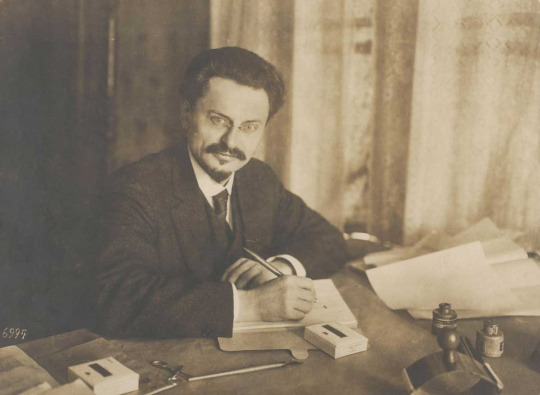
“Citizens of Petrograd! The Council of People's Commissars and the Central Executive Committee went to Moscow for the All-Russian Congress of Soviets. Already now we can say with almost complete confidence that at this Congress it will be decided to move the capital from Petrograd to Moscow. The interests of the entire country require this. The German imperialists, who imposed their annexationist world on us, remain mortal enemies of Soviet power. Now they are opening a campaign against revolutionary Finland. Under these conditions, it is impossible for the Council of People's Commissars to stay and work any longer in Petrograd, within a two-day march from the location of the German troops.
But for the safety of Petrograd itself, it is necessary to move the capital to Moscow. The capture of Petrograd is still presented to the German imperialists as a mortal blow to the revolution and Soviet power.
The transfer of the capital to Moscow will show them that Soviet power feels equally strong throughout the country, and will thus reveal the pointlessness of the campaign against Petrograd. Citizens! If you calmly weigh these circumstances, you will understand that with the transfer of the capital, the military security of Petrograd increases enormously. There cannot and should be no place for any kind of panic. There is no need to say that even after the temporary transfer of the capital, Petrograd remains the first city of the Russian revolution. All measures necessary for its external and internal security and the food supply of its population are taken with all possible energy. The Revolutionary Commissariat is entrusted with the responsibility of protecting Soviet power and revolutionary order in Petrograd. This task will be completed to the end. Counter-revolutionaries, pogromists, White Guards who are trying to stir up unrest and cause disorder in the city will be wiped out from the face of the earth.
Workers, revolutionary soldiers, honest citizens! Great trials have befallen our country! Let each of you remain at his post, imbued with a single will to win or die!
Long live Red Petrograd! Long live socialist Russia!
Chairman of the Military Revolutionary Commissariat L. Trotsky.”
[Русский внизу]
«Граждане Петрограда! Совет Народных Комиссаров и Центральный Исполнительный Комитет выехали в Москву на Всероссийский Съезд Советов. Уже сейчас можно почти с полной уверенностью сказать, что на этом Съезде будет решено перенести столицу из Петрограда в Москву. Этого требуют интересы всей страны. Германские империалисты, навязавшие нам свой аннексионистский мир, остаются смертельными врагами Советской власти. Сейчас они открывают поход против революционной Финляндии. При этих условиях Совету Народных Комиссаров невозможно дольше оставаться и работать в Петрограде, в расстоянии двухдневного перехода от расположения германских войск.
Но и для безопасности самого Петрограда необходимо перенесение столицы в Москву. Захват Петрограда представляется до сих пор германски�� империалистам, как смертельный удар по революции и Советской власти.
Перенесение столицы в Москву покажет им, что Советская власть одинаково прочно чувствует себя во всей стране, и обнаружит, таким образом, бесцельность похода на Петроград. Граждане! Если вы спокойно взвесите указанные обстоятельства, то вы поймете, что с перенесением столицы военная безопасность Петрограда чрезвычайно возрастает. Для какой бы то ни было паники не может быть и не должно быть места. Незачем говорить, что и после временного перенесения столицы Петроград остается первым городом российской революции. Все меры, какие необходимы для его внешней и внутренней безопасности и продовольствия его населения, принимаются со всей энергией. На Революционный Комиссариат возложена обязанность охранения в Петрограде Советской власти и революционного порядка. Эта задача будет выполнена до конца. Контр-революционеры, погромщики, белогвардейцы, которые пытаются поднять в городе смуту и вызвать беспорядок, будут сметены с лица земли.
Рабочие, революционные солдаты, честные граждане! Великие испытания обрушились на нашу страну! Пусть же каждый из вас остается на своем посту, проникнутый единой волей победить или умереть!
Да здравствует Красный Петроград! Да здравствует социалистическая Россия!
Председатель Военно-Революционного Комиссариата Л. Троцкий.»
#Trotsky#Leon Trotsky#Лев Троцкий#Леон Троцкий#Russian Revolution#the Russian Revolution#Bolsheviks#Bolshevism#Communism#Russian History#Soviet History#Soviet Russia#Communist Russia
4 notes
·
View notes
Text
Events 6.22
217 BC – Battle of Raphia: Ptolemy IV Philopator of Egypt defeats Antiochus III the Great of the Seleucid kingdom. 168 BC – Battle of Pydna: Romans under Lucius Aemilius Paullus defeat Macedonian King Perseus who surrenders after the battle, ending the Third Macedonian War. 813 – Battle of Versinikia: The Bulgars led by Krum defeat the Byzantine army near Edirne. Emperor Michael I is forced to abdicate in favor of Leo V the Armenian. 910 – The Hungarians defeat the East Frankish army near the Rednitz River, killing its leader Gebhard, Duke of Lotharingia (Lorraine). 1527 – Fatahillah expels Portuguese forces from Sunda Kelapa, now regarded as the foundation of Jakarta. 1593 – Battle of Sisak: Allied Christian troops defeat the Ottomans. 1633 – The Holy Office in Rome forces Galileo Galilei to recant his view that the Sun, not the Earth, is the center of the Universe in the form he presented it in, after heated controversy. 1774 – The British pass the Quebec Act, setting out rules of governance for the colony of Quebec in British North America. 1783 – A poisonous cloud caused by the eruption of the Laki volcano in Iceland reaches Le Havre in France. 1807 – In the Chesapeake–Leopard affair, the British warship HMS Leopard attacks and boards the American frigate USS Chesapeake. 1813 – War of 1812: After learning of American plans for a surprise attack on Beaver Dams in Ontario, Laura Secord sets out on a thirty kilometres (19 mi) journey on foot to warn Lieutenant James FitzGibbon. 1839 – Cherokee leaders Major Ridge, John Ridge, and Elias Boudinot are assassinated for signing the Treaty of New Echota, which had resulted in the Trail of Tears. 1870 – The United States Department of Justice is created by the U.S. Congress. 1893 – The Royal Navy battleship HMS Camperdown accidentally rams the British Mediterranean Fleet flagship HMS Victoria which sinks taking 358 crew with her, including the fleet's commander, Vice-Admiral Sir George Tryon. 1897 – British colonial officers Charles Walter Rand and Lt. Charles Egerton Ayerst are assassinated in Pune, Maharashtra, India by the Chapekar brothers and Mahadeo Vinayak Ranade, who are later caught and hanged. 1898 – Spanish–American War: In a chaotic operation, 6,000 men of the U.S. Fifth Army Corps begins landing at Daiquirí, Cuba, about 16 miles (26 km) east of Santiago de Cuba. Lt. Gen. Arsenio Linares y Pombo of the Spanish Army outnumbers them two-to-one, but does not oppose the landings. 1907 – The London Underground's Charing Cross, Euston and Hampstead Railway opens. 1911 – George V and Mary of Teck are crowned King and Queen of the United Kingdom of Great Britain and Ireland. 1911 – Mexican Revolution: Government forces bring an end to the Magonista rebellion of 1911 in the Second Battle of Tijuana. 1918 – The Hammond Circus Train Wreck kills 86 and injures 127 near Hammond, Indiana. 1940 – World War II: France is forced to sign the Second Compiègne armistice with Germany, in the same railroad car in which the Germans signed the Armistice in 1918. 1941 – World War II: Nazi Germany invades the Soviet Union in Operation Barbarossa. 1942 – World War II: Erwin Rommel is promoted to Field Marshal after the Axis capture of Tobruk. 1942 – The Pledge of Allegiance is formally adopted by US Congress. 1944 – World War II: Opening day of the Soviet Union's Operation Bagration against the Army Group Centre. 1944 – U.S. President Franklin D. Roosevelt signs into law the Servicemen's Readjustment Act of 1944, commonly known as the G.I. Bill. 1945 – World War II: The Battle of Okinawa comes to an end. 1948 – The ship HMT Empire Windrush brought the first group of 802 West Indian immigrants to Tilbury, marking the start of modern immigration to the United Kingdom. 1948 – King George VI formally gives up the title "Emperor of India", half a year after Britain actually gave up its rule of India. 1962 – Air France Flight 117 crashes on approach to Pointe-à-Pitre International Airport in Guadeloupe, killing 112 people. 1965 – The Treaty on Basic Relations between Japan and the Republic of Korea is signed. 1966 – Vietnamese Buddhist activist leader Thích Trí Quang was arrested as the military junta of Nguyen Cao Ky crushed the Buddhist Uprising. 1969 – The Cuyahoga River catches fire in Cleveland, Ohio, drawing national attention to water pollution, and spurring the passing of the Clean Water Act and the creation of the Environmental Protection Agency. 1978 – Charon, the first of Pluto's satellites to be discovered, was first seen at the United States Naval Observatory by James W. Christy. 1979 – Former Liberal Party leader Jeremy Thorpe was acquitted of conspiracy to murder Norman Scott, who had accused Thorpe of having a relationship with him. 1984 – Virgin Atlantic launches with its first flight from London to Newark. 1986 – The famous Hand of God goal, scored by Diego Maradona in the quarter-finals of the 1986 FIFA World Cup match between Argentina and England, ignites controversy. This was later followed by the Goal of the Century. Argentina wins 2–1 and later goes on to win the World Cup. 1990 – Cold War: Checkpoint Charlie is dismantled in Berlin. 2000 – Wuhan Airlines Flight 343 is struck by lightning and crashes into Wuhan's Hanyang District, killing 49 people. 2002 – An earthquake measuring 6.5 Mw strikes a region of northwestern Iran killing at least 261 people and injuring 1,300 others and eventually causing widespread public anger due to the slow official response. 2009 – A Washington D.C Metro train traveling southbound near Fort Totten station collides into another train waiting to enter the station. Nine people are killed in the collision (eight passengers and the train operator) and at least 80 others are injured. 2012 – Paraguayan President Fernando Lugo is removed from office by impeachment and succeeded by Federico Franco. 2012 – A Turkish Air Force McDonnell Douglas F-4 Phantom II fighter plane is shot down by the Syrian Armed Forces, killing both of the plane's pilots and worsening already-strained relations between Turkey and Syria. 2015 – The Afghan National Assembly building is attacked by gunmen after a suicide bombing. All six of the gunmen are killed and 18 people are injured. 2022 – An earthquake occurs in eastern Afghanistan resulting in over 1,000 deaths.
2 notes
·
View notes
Photo

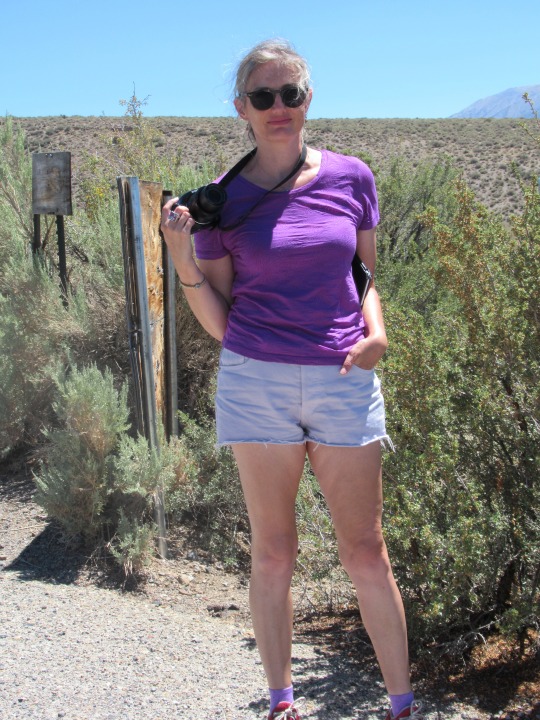

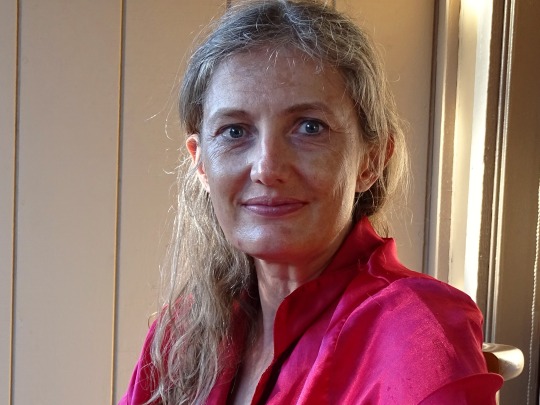
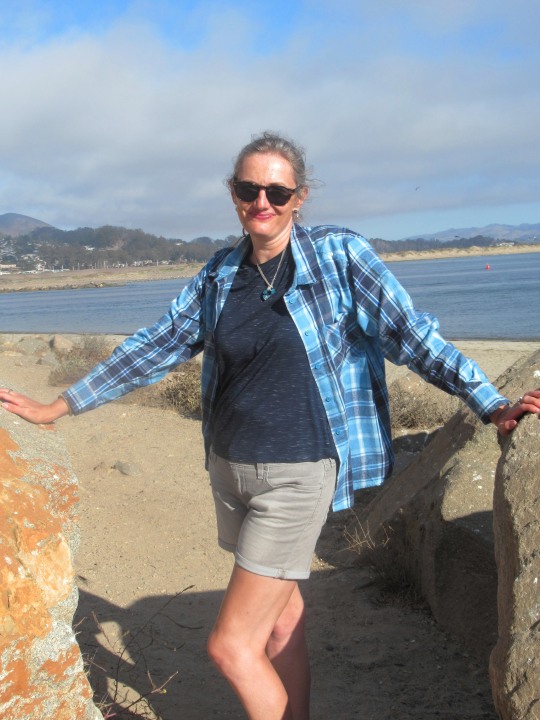
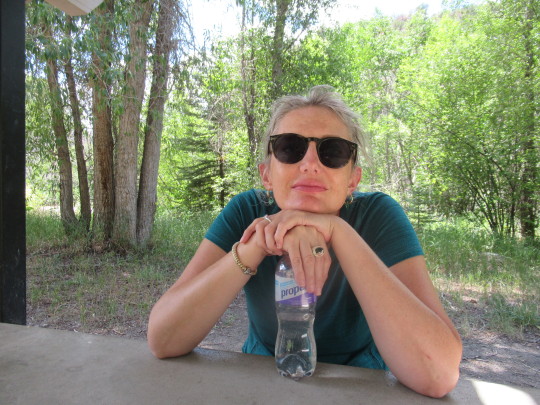

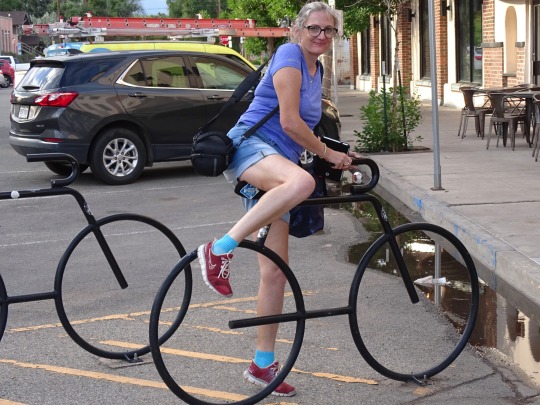
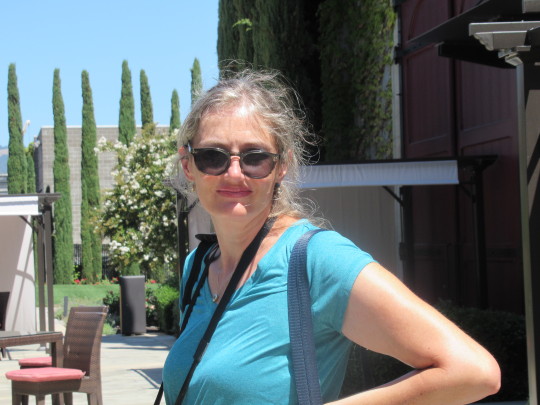
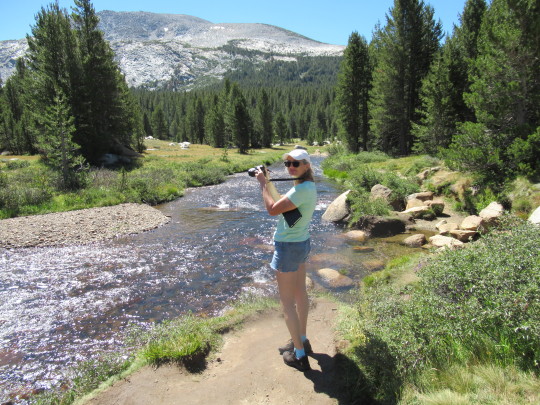
International Women’s Day
Mother, sisters, wives, girlfriends, and fiancees…what would we ever do without them? Nobody can honestly say we don’t owe an enormous amount to the women in our lives, from the mothers who made us chicken soup when we were sick as children, to the sisters who helped us decide what to wear on our first date, to the wives who somehow manage to juggle both a career and a family, never missing a beat. Women’s Day is all about celebrating these incredible people and showing them how much we love, respect and value them.
This holiday is perhaps especially important in parts of the world where women are still forced to deal with shocking inequality on a daily basis and is meant to raise awareness of the challenges and struggles faced by these women. Women’s Day celebrates women’s history, highlighting key events, milestones, and achievements, and aims to further promote and raise awareness of women’s rights and to achieve equal opportunity status in all walks of life.
History of International Women’s Day
It may come as a rather sad surprise that International Women’s Day was first celebrated on February 28th, 1909 in New York. Two years later, German socialist Luise Zietz proposed that the holiday become an annually observed one that would celebrate various women’s issues, such as suffrage, so as to promote equal rights for women. The first few International Women’s Days were celebrated in a quite different fashion than they are nowadays, with hundreds of demonstrations taking place in Europe. During these demonstrations, women demanded they finally be given both the right to vote and to hold public office.
Employment sex discrimination was also an important issue. In 1917, the International Women’s Day demonstrations in Saint Petersburg, Russia, helped initiate the February Revolution, when women marched through the city demanding an end to World War I. This shocked even Leon Trotsky, who, much like other Russian leaders of the day, did not expect the Women’s Day protests to cause that much of a stir. Until 1977, Women’s Day was celebrated mainly in socialist countries. It was only after the United Nations General Assembly’s decision to proclaim March 8th International Women’s Day that the holiday gained worldwide popularity.
International Women’s Day Timeline
1848 Seneca Falls Convention
The first convention held in the United States in support of Women’s Rights, this New York meeting, held in July, signaled the beginning of the Women’s Suffrage Movement.
February 28, 1909 First Women’s Day in the United States
National Women’s Day begins in the United States, prompted by a growing movement toward women’s rights. It’s organized by the Socialist Party of America and celebrated on a Sunday so working women can participate.
1910 International Conference of Working Women in Copenhagen
The idea for an international day acknowledging women is brought forth by Clara Zetkin, a German political leader. This suggestion is approved by more than 100 women from 17 different countries.
1911 First International Women’s Day Observed
More than 1 million women and men throughout Austria, Switzerland, Germany and Denmark, attend various rallies.
1913 Russian Women Celebrate
Just prior to the outbreak of World War I, Russians celebrate International Women’s Day. It is agreed to celebrate annually on March 8 (by the Gregorian Calendar).
1917 Russian Women’s Day Leads to Women’s Right to Vote
Feminist demonstrations in Russia are part of a chain of events that lead to the abdication of the Czar and the Russian Revolution, ultimately resulting in the right to vote for women.
1918 Some Women in England Gain Right to Vote
Women in England over the age of 30 with property qualifications receive the right to vote (men qualify beginning at ages 19-21).
1920 American Women Earn Right to Vote
After many attempts, the 19th Amendment to the US Constitution is finally passed.
1928 England Adopts Equal Voting Rights
English women earn the same access to voting as men.
1945 United Nations Recognizes Equality
The Charger of the UN becomes the first international agreement to state equality between women and men.
1975 United Nations First Acknowledges International Women’s Day
IWD is first celebrated by the UN.
1977 UN General Assembly Adopts Women’s Day Resolution
The UN calls Member States to observe a “United Nations Day for Women’s Rights and International Peace” on any day of their choosing throughout the year.
2001 Women’s Day Goes Online
In need of a reboot after having lost momentum over the last decades of the 20th century, the International Women’s Day Movement launches online. The website helps with women’s campaigns and leads out in raising money for charities that impact equality for women.
How to celebrate International Women’s Day
There are many ways that you can go about celebrating this holiday, but all of them have a similar goal: to raise awareness about the struggles of women the world over and honor their achievements. Of course, not all achievements are huge, worldwide game-changers like women finally obtaining the right to vote—there are all sorts of other, smaller feats that women you know manage on an everyday basis that you may not pay too much attention to until you try calming 2 crying toddlers, making dinner and explaining the particulars of a newly-acquired client to your boss over the phone at the same time. This may sound ridiculously hard to pull off, but this is something thousands of women pull off every day, something that should be deeply appreciated and something that nobody should take for granted. Grand gestures aren’t necessarily required to show appreciation, either—sometimes a simple “thank you, I have no idea how you do it” is enough to lift an overworked woman’s spirits.
International Women’s Day Is Also About Women’s Rights
If you’d like to do something more, though, there is a virtually endless amount of things you can do to help improve women’s lives the world. You can attend one of the 1000+ events organized globally where you can learn about what women’s lives are like in different countries and make a donation to the event you attend. Reading books is also a great way of broadening your horizons, and biographies of women like fearless Somalian women’s rights activist Ayaan Hirsi Ali will definitely open your eyes and inspire you to see women’s lives and problems completely differently.
It’s no secret that women’s rights have evolved greatly. However, things could still be a lot better! People such as Malala Yousafzai, a young activist for female education in Pakistan. Her story, I am Malala, describes her fight for education as a woman in Pakistan, and the dramatic consequences of her activism. Targeted by a Taliban’s assassination, Malala was shot in 2012. She was transported to different hospitals before being rushed to the UK, where she was treated and survived her injuries. Her autobiography is an eye-opening shockwave that will make you aware of the struggles that many women continue to face. Nowadays, Malala is a student at the world famous University of Oxford in the UK!
Broadening your horizon on Women’s Day to understand the differences between countries and how women are treated in the world can offer a new appreciation for women. Let Malala’s story inspire you to attend events or support more initiatives to help women. Why not keep your eyes open for books like Malala’s autobiography that share the experience of women in different cultures?
Supporting a Woman on International Women’s Day
Have you ever stopped to consider what it means to be a woman? Aside from the biological definition, there is a lot that goes into defining, feeling, experiencing and celebrating womanhood on Women’s Day. No, it doesn’t have to be a philosophical debate about what makes a woman who she is! But in a day and age where gender issues and gender roles are being questioned, it’s only fair to broaden your perception of what a woman can be and do. The first and most important thing you need to remember is that women are sick of hearing about gender stereotypes. Therefore, Women’s Day is a day to be embraced with an open mind. Question your assumptions about what people can and can’t do based on gender. Why not support a female friend to follow her dreams?
Spend International Women’s Day With Women Who Don’t Let Conventions Define Them
What makes her a woman? Women, such as Anne Lister, have chosen to define their womanhood on their own terms. During the 19th century in England, Anne Lister, also nicknamed Gentleman Jack, took part in activities that were otherwise reserved to men and also ran typically men’s businesses. She also chose to marry another woman, and lived with her, despite not receiving any legal recognition. Gentleman Jack cultivated her free spirit without compromising, which her autobiography, Gentleman Jack, reveals.
Another autobiography that enhances the definition of being a woman is Trans, a Memoir, by Juliet Jacques. Jacques describes what it means to be a woman throughout the transitioning process. On International Women’s Day, show your full support by celebrating and embracing different perceptions of what it means to be a woman.
Spend A Day In Her Shoes On International Women’s Day
Challenges exist in different shapes. It’s something Nicole Byers, the bubbly “Nailed It” presenter on Netflix knows well. Her podcast, Why Won’t You Date Me, describes with humor her quest for love and the modern expectations that society has for women. The sweet dreams of childhood are nothing like the harsh reality, like the podcast Stuff Mom Never Told You explains. Spend the day listening to the stories of everyday women, who could be your sister, your mother, or your wife.
Source
#Alamosa#Louis M. Martini Winery#St. Helena#Freemark Abbey Winery#Morro Bay#Beringer Vineyards#Yosemite National Park#summer 2022#cityscape#landscape#Pacific Ocean#California#Napa Valley#Utah#Colorado#tourist attraction#landmark#original photography#8 March#International Women’s Day#InternationalWomensDay#travel#vacation
3 notes
·
View notes
Text
Der Abend kommt so schnell ... MUCCA Büchersalon 18.10.24,19h

"Sarah Sonja Lerch - Münchens vergessene Revolutionärin" - vorgestellt von Cornelia Naumann im MUCCA Büchersalon 18.10.24, um 19h im Haus 38 des Kreativgelände, Dachauerstr. 114, Eintritt frei

Sarah Sonja Lerch in den RüstungsarbeiterInnen-Streiks in München Sarah Sonja Lerch, geb. Rabinowitz, kam am 3. Mai 1882 in Warschau zur Welt. Sie besuchte das 2. Mädchengymnasium in Warschau, in dem auch Rosa Luxemburg Abitur gemacht hatte. Durch ihren Vater, den Gelehrten und Journalisten Saul Pinchas Rabinowitz, sowie durch ihren Bruder Shmuel Rabinowitz kam Sonja Rabinowitz schon in der Kindheit mit russischen Revolutionären in Kontakt. 1899 übersetzte sie Das jüdische Weib von Nahida Remy aus dem Deutschen ins Russische, 1902 ging sie zum Studium nach Wien, 1903 nach Bern, anschließend nach Zürich. Sonja Rabinowitz war Mitglied im Jüdischen Arbeiterbund und für diesen wahrscheinlich an der ersten russischen Revolution 1905 beteiligt. Nach ihrer eigenen Aussage im Verhör war sie Mitglied im Arbeiter- und Deputiertenrat in Odessa, wurde verhaftet und floh 1907 über Konstantinopel nach Deutschland. Anderen Angaben zufolge arbeitete sie als Lehrerin in Odessa. 1908 übersiedelte Rabinowitz mit Eltern und der jüngeren Schwester Rachel nach Frankfurt am Main. Sie trat in die Frankfurter SPD ein, ohne den Kontakt zum Bund (Allgemeiner Jüdischer Arbeiterbund) zu vernachlässigen, für den sie Vorträge hielt, und nahm ihr unterbrochenes Studium der Nationalökonomie in Gießen wieder auf, das sie 1913 mit der Dissertation Zur Entwicklung der Arbeiterbewegung in Russland bis zur großen Revolution von 1905 abschloss. Am 30. Dezember 1912 heiratete sie in Gießen Dr. Eugen Heinrich Lerch und zog mit ihm nach München, wo Lerch sich an der LMU bei Professor Vossler habilitierte. Vermutlich als eine der ersten trat sie 1917 in die neu gegründete Münchner USPD ein. Bei der Vorbereitung des Januarstreiks 1918 nannte sie sich, offenbar in Absprache mit dem Vorstand der Münchner USPD, „Ranowska“ bzw. „Ranowsky“, um ihrem Mann nicht zu schaden. Artikel in der Gleichheit, im Vorwärts, auch in der Münchener Post könnten ebenfalls unter diesem Pseudonym erschienen sein, sind aber noch nicht aufgefunden worden. Vom 27. Januar bis 31. Januar 1918 betrieb sie neben Kurt Eisner in München Agitation für den Massenstreik, der den 1. Weltkrieg beenden sollte. Am Morgen des 1. Februar wurde sie mit den weiteren Streikführern wegen mutmaßlichem „Landesverrat“ verhaftet. Am 29. März 1918 wurde Sonja Lerch in einer Zelle im Gefängnis Stadelheim, die offenbar nicht die ihre war, erhängt aufgefunden und am 1. April 1918 auf dem Neuen Israelitischen Friedhof beigesetzt. Ernst Toller baute ihr in seinem Stück Masse Mensch (UA Nürnberg 1920) ein Denkmal. Feinfühlig zeigt er die Tragik der Frau auf, die gegen die Partei, vertreten durch den „Namenlosen“ und den kaisertreuen Gatten, eine pazifistische Revolution durchsetzen will und sich damit zwischen alle Stühle setzt. Verfasst von: Cornelia Naumann, auf Zwischen alle Stühle (literaturportal-bayern.de) Sekundärliteratur:Eine Elegie Fuer Sonja Lerch. URL:

https://youtu.be/hRSNeXOZrnI, (09.04.2018). Denz, Rebekka (2010): Zwischen „russischer Steppenfurie“ und Idealtyp einer Revolutionärin. In: Ariadne Nr. 57, S. 28ff. Gerstenberg, Günther; Naumann, Cornelia (2017): Steckbriefe. Gegen Eisner, Kurt u.a. wg. Landesverrats. Lich. Gurganus, Al (2005): Sarah Sonja Rabinowitz: The Sonja Irene L. in Tollers Masse Mensch. In: German Studies Review 28, Nr. 3, Oktober, S. 607ff. Naumann, Cornelia (2017): Sarah Sonja Lerch und die Januarstreiks 1918. Vortrag vom 19. Januar 2017. München, Revolutionswerkstatt. Dies. (2017): Sarah Sonja Lerch und die russische Revolution 1917. Vortrag vom 11. Juli 2017 in Würzburg. Tagung: Die russische Revolution und ihre Wahrnehmung. Dies.: Der Abend kommt so schnell. Sarah Lerch – Münchens vergessene Revolutionärin. Roman. Gmeiner Verlag, Meßkirch 2018. Tworek, Elisabeth: Toller, Ernst: Masse Mensch, 1919/20. In: Historisches Lexikon Bayerns, URL:

http://www.historisches-lexikon-bayerns.de/Lexikon/Toller, Ernst: Masse Mensch, 1919/20, (07.09.2017). Read the full article
0 notes
Text
[Der Abend kommt so schnell ... MUCCA Büchersalon 18.10.24,19h](https://raete-muenchen.de/der-abend-kommt-so-schnell-mucca-buechersalon-18-10-2419h "https://raete-muenchen.de/der-abend-kommt-so-schnell-mucca-buechersalon-18-10-2419h")
„Sarah Sonja Lerch – Münchens vergessene Revolutionärin“ – vorgestellt von Cornelia Naumann im
MUCCA Büchersalon 18.10.24, um 19h im Haus 38 des Kreativgelände, Dachauerstr. 114, Eintritt frei
Sarah Sonja Lerch in den RüstungsarbeiterInnenStreiks in MünchenSarah Sonja Lerch, geb. Rabinowitz, kam am 3. Mai 1882 in Warschau zur Welt. Sie besuchte das 2. Mädchengymnasium in Warschau, in dem auch Rosa Luxemburg Abitur gemacht hatte. Durch ihren Vater, den Gelehrten und Journalisten Saul Pinchas Rabinowitz, sowie durch ihren Bruder Shmuel Rabinowitz kam Sonja Rabinowitz schon in der Kindheit mit russischen Revolutionären in Kontakt. 1899 übersetzte sie Das jüdische Weib von Nahida Remy aus dem Deutschen ins Russische, 1902 ging sie zum Studium nach Wien, 1903 nach Bern, anschließend nach Zürich.
Sonja Rabinowitz war Mitglied im Jüdischen Arbeiterbund und für diesen wahrscheinlich an der ersten russischen Revolution 1905 beteiligt. Nach ihrer eigenen Aussage im Verhör war sie Mitglied im Arbeiter- und Deputiertenrat in Odessa, wurde verhaftet und floh 1907 über Konstantinopel nach Deutschland. Anderen Angaben zufolge arbeitete sie als Lehrerin in Odessa.
1908 übersiedelte Rabinowitz mit Eltern und der jüngeren Schwester Rachel nach Frankfurt am Main. Sie trat in die Frankfurter SPD ein, ohne den Kontakt zum Bund (Allgemeiner Jüdischer Arbeiterbund) zu vernachlässigen, für den sie Vorträge hielt, und nahm ihr unterbrochenes Studium der Nationalökonomie in Gießen wieder auf, das sie 1913 mit der Dissertation Zur Entwicklung der Arbeiterbewegung in Russland bis zur großen Revolution von 1905 abschloss. Am 30. Dezember 1912 heiratete sie in Gießen Dr. Eugen Heinrich Lerch und zog mit ihm nach München, wo Lerch sich an der LMU bei Professor Vossler habilitierte. Vermutlich als eine der ersten trat sie 1917 in die neu gegründete Münchner USPD ein. Bei der Vorbereitung des Januarstreiks 1918 nannte sie sich, offenbar in Absprache mit dem Vorstand der Münchner USPD, „Ranowska“ bzw. „Ranowsky“, um ihrem Mann nicht zu schaden. Artikel in der Gleichheit, im Vorwärts, auch in der Münchener Post könnten ebenfalls unter diesem Pseudonym erschienen sein, sind aber noch nicht aufgefunden worden.
Vom 27. Januar bis 31. Januar 1918 betrieb sie neben Kurt Eisner in München Agitation für den Massenstreik, der den 1. Weltkrieg beenden sollte. Am Morgen des 1. Februar wurde sie mit den weiteren Streikführern wegen mutmaßlichem „Landesverrat“ verhaftet. Am 29. März 1918 wurde Sonja Lerch in einer Zelle im Gefängnis Stadelheim, die offenbar nicht die ihre war, erhängt aufgefunden und am 1. April 1918 auf dem Neuen Israelitischen Friedhof beigesetzt.
Ernst Toller baute ihr in seinem Stück Masse Mensch (UA Nürnberg 1920) ein Denkmal. Feinfühlig zeigt er die Tragik der Frau auf, die gegen die Partei, vertreten durch den „Namenlosen“ und den kaisertreuen Gatten, eine pazifistische Revolution durchsetzen will und sich damit zwischen alle Stühle setzt.
Verfasst von: Cornelia Naumann, auf Zwischen alle Stühle (literaturportal-bayern.de)
Sekundärliteratur:Eine Elegie Fuer Sonja Lerch. URL: https://youtu.be/hRSNeXOZrnI, (09.04.2018). Denz, Rebekka (2010): Zwischen „russischer Steppenfurie“ und Idealtyp einer Revolutionärin. In: Ariadne Nr. 57, S. 28ff.
Gerstenberg, Günther; Naumann, Cornelia (2017): Steckbriefe. Gegen Eisner, Kurt u.a. wg. Landesverrats. Lich.
Gurganus, Al (2005): Sarah Sonja Rabinowitz: The Sonja Irene L. in Tollers Masse Mensch. In: German Studies Review 28, Nr. 3, Oktober, S. 607ff.
Naumann, Cornelia (2017): Sarah Sonja Lerch und die Januarstreiks 1918. Vortrag vom 19. Januar 2017. München, Revolutionswerkstatt.
Dies. (2017): Sarah Sonja Lerch und die russische Revolution 1917. Vortrag vom 11. Juli 2017 in Würzburg. Tagung: Die russische Revolution und ihre Wahrnehmung.
Dies.: Der Abend kommt so schnell. Sarah Lerch – Münchens vergessene Revolutionärin. Roman. Gmeiner Verlag, Meßkirch 2018.
Tworek, Elisabeth: Toller, Ernst: Masse Mensch, 1919/20. In: Historisches Lexikon Bayerns, URL: http://www.historisches-lexikon-bayerns.de/Lexikon/Toller, Ernst: Masse Mensch, 1919/20, (07.09.2017).
#raete-muenchen #sarah-sonja-lerch Originally posted at: [https://raete-muenchen.de/der-abend-kommt-so-schnell-mucca-buechersalon-18-10-2419h](https://raete-muenchen.de/der-abend-kommt-so-schnell-mucca-buechersalon-18-10-2419h "Permalink")
original post
0 notes
Text
For the last fucking time! The German communists of 1918/19 (although not yet organized in a party) did NOT want a democracy like the USA or the UK had them. They wanted a Sowjet Republic like the USSR had since their revolution! Why do you think the Weimar Republic collapsed 1933 among other things? Because too many people wanted a democracy? Fuck no, it collapsed also because not enough people wanted a democracy! Get your facts straight, please. Especially if they’re basic facts for the subject and you’re doing a presentation omg.
2 notes
·
View notes
Photo

German Communist Leader Eugen Leviné Uncredited and Undated Photograph
Eugen Leviné was a founding member of the German Communist Party and its predecessor, the Spartakusbund.. He was the leader of the short-lived Bavarian Soviet Republic, which was proclaimed during a revolutionary upsurge in 1918/19. The Bavarian Soviet Republic was suppressed by the post-World War I German government under the conservative Social Democrat Friedrich Ebert, who ordered both the German Army and the increasingly fascistic paramilitary Freikorps, from which the Nazis drew many early members, to crush the revolution. Leviné was arrested and executed in 1919.
“We communists are all dead men on leave.” Eugen Leviné
52 notes
·
View notes
Text
Wouldn't even mind that much if the cold I picked up on Friday got a bit worse by tomorrow morning because it would mean I could stay in bed all day with my copy of Im Westen Nichts Neues and this history magazine on the German Revolution 1918/19
#where's this post that's like 'men love reading about war in their queen sized beds'. that's me right now#⚓
3 notes
·
View notes
Photo

Finnish White Guard member Heikki Salmi and German soldier in Helsinki, April 19, 1918.
The Battle of Helsinki was a 1918 Finnish Civil War battle, fought in 11-13 April between the German troops from Die Ostsee-Division and Finnish Whites against the Finnish Reds in Helsinki.
In 1918 a Civil War was raging in Finland, dividing the people in two. The two sides in the Civil War were the White Guard that represented the Finnish Senate, that is Government, and the Red Guard led by the Finnish People’s Delegation. At the end of January 1918, the Revolution of the Reds started. Helsinki was the capital of Red Finland until April, when the Germans who had arrived in order to help the Whites occupied the city between April 11–13. There was a transfer of power in the city and the Whites came out of their hiding-places at the same time that the Reds gave up their arms.
Over 40,000 people died in the bitter fighting and the war's aftermath. •••••••• Valkokaartilainen kirjakauppias Heikki August Salmi (1898-1978) ja saksalainen sotilas Ruotsalaisen Teatterin edessä Helsingissä, 19.04.1918.
Helsingin valtaus oli 11.–13. huhtikuuta 1918 käyty taistelu, jossa Saksan Itämeren-divisioona valkokaartin avustuksella valtasi punaisten hallussa olleen Helsingin.
Vuonna 1918 Suomessa käytiin sota, joka jakoi kansan kahtia. Sodan osapuolina olivat Suomen senaatin eli hallituksen edustamat valkoiset joukot ja Suomen kansanvaltuuskunnan johtamat punaiset. Tammikuun lopussa 1918 Helsingissä alkoi punaisten vallankumous. Helsinki oli punaisen Suomen pääkaupunki aina huhtikuuhun asti, kunnes valkoisten avuksi saapuneet saksalaiset valtasivat kaupungin 11.-13.4. Valta vaihtui kaupungissa ja valkoiset tulivat esiin piiloistaan samaan aikaan kun punaiset luopuivat aseistaan.
Vuoden 1918 taisteluissa, terrorin uhreina ja sodan jälkeisillä vankileireillä kuoli yli 40 000 ihmistä. •••••••• [ Sundström Eric | Helsingin kaupunginmuseo | Muistopaikat1918 ]
#ww1#worldwar#Suomi#finland#history#war history#sotahistoria#vapaussota#kansalaissota#civil war#sisällissota#war#colorized#jhlcolorizing#colorizing#colourised#colourized#colorised#helsinki
8 notes
·
View notes
Photo

Landwehr Canal, Berlin Landwehr Canal, Berlin The canal where they drowned Rosa L. like a stubbed out papirosa Has almost virtually gone wild.
#Berlin Wall#Christo#Cold War#German Revolution of 1918–19#Landwehr Canal (Berlin)#Rosa Luxemburg#translation
0 notes